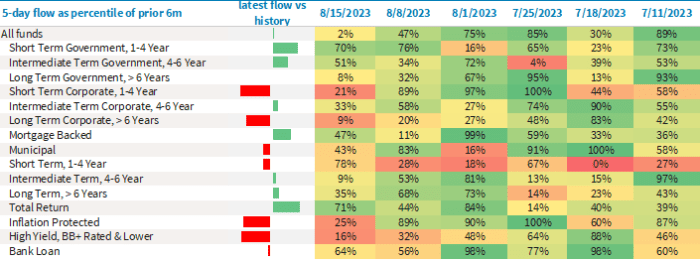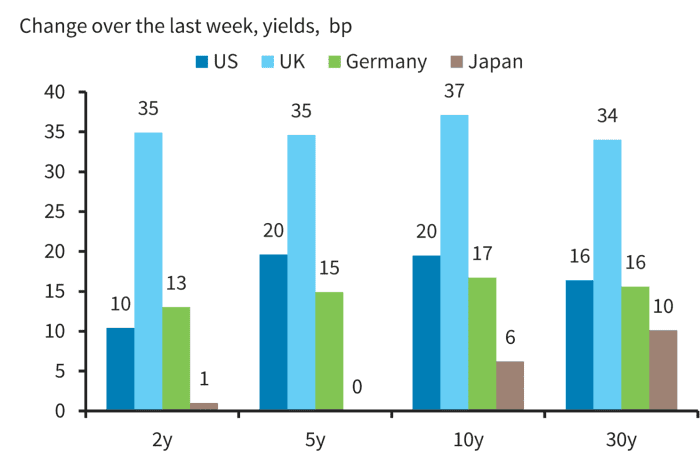There is room for a continued selloff in U.S. Treasurys which has already pushed 10- and 30-year yields to their highest levels since 2007 and 2011, according to researchers at Barclays.
Though the recent selloff took a breather on Friday, the steady drive higher in long-dated yields which unfolded this week left observers warning that the era of low rates may be firmly behind the U.S. as a new normal appears to take shape in the bond market. Long-term rates yields are just beginning to enter ranges that have been historically consistent with where they traded during the early 2000s.
Read: Why Treasury yields keep rising, causing pain for stock-market investors and How higher-for-longer rates are playing out
A number of factors are contributing to the changing dynamics — including data showing a resilient U.S. economy; the minutes of the Federal Reserve’s last meeting, which revealed the possibility of more interest rate hikes to come; and higher real or inflation-adjusted yields. The 10- BX:TMUBMUSD10Y and 30-year Treasury yields BX:TMUBMUSD30Y have respectively jumped by 29.6 basis points and 23.3 basis points over the six-day trading period that ended on Thursday. Meanwhile, year-to-date returns in the Treasury market turned negative this week.
“We have been cautioning against fading the bond market selloff, as, despite the sharp move higher, we thought yields were not yet stretched. We maintain that view,” Anshul Pradhan, head of U.S. rates research at Barclays BARC, -0.81%, and others wrote in a note on Thursday. In addition, “investors are getting worried about a large further selloff,” judging by what Barclays describes as “building stress” in the options market.
It’s not just the data that’s pointing to a U.S. economy with considerable momentum. As of this week, the Atlanta Fed’s GDPNow forecasting model is projecting real gross domestic product growth that could come in at a startling 5.8% for the third quarter. Even if one chooses to discount that estimate, according to Barclays, the economy is poised to grow at a solid pace during the current period.
“An economy growing above trend, potentially even accelerating, despite the tightening of policy, calls into question whether monetary policy is even tight,” Pradhan and others wrote. “Markets are reacting to this by adjusting real yields higher.”
The Treasury market selloff that pushed long-dated yields to multiyear highs this week has started to negatively affect broader demand for fixed income, particularly in short- and long-term corporate bond funds, inflation-protected funds, and high-yield funds where securities are rated at BB+ and lower.

Source: EPFR, Barclays Research
Currently, yields are not just rising in the U.S., but around the world in places like Japan, the U.K. and Germany as the higher-for-longer theme takes hold.

Source: Bloomberg, Barclays Research
This week’s Treasury-market selloff marks a turnabout in sentiment from earlier this year, when fears that the U.S. might fall into a recession prevailed and the safe-haven appeal of government debt put a cap on how high long-term yields could go.
Friday brought another day in which risky assets were responding to readjustments in the bond market.
U.S. stocks DJIA SPX COMP were mixed in New York’s afternoon trading, with Dow industrials looking to avoid the worst week since March. One- BX:TMUBMUSD01Y through 30-year Treasury yields were down as buyers of U.S. government debt re-emerged. Ten- and 30-year yields traded at 4.23% and 4.37%, respectively, backing off from their highest levels since 2007 and 2011.
